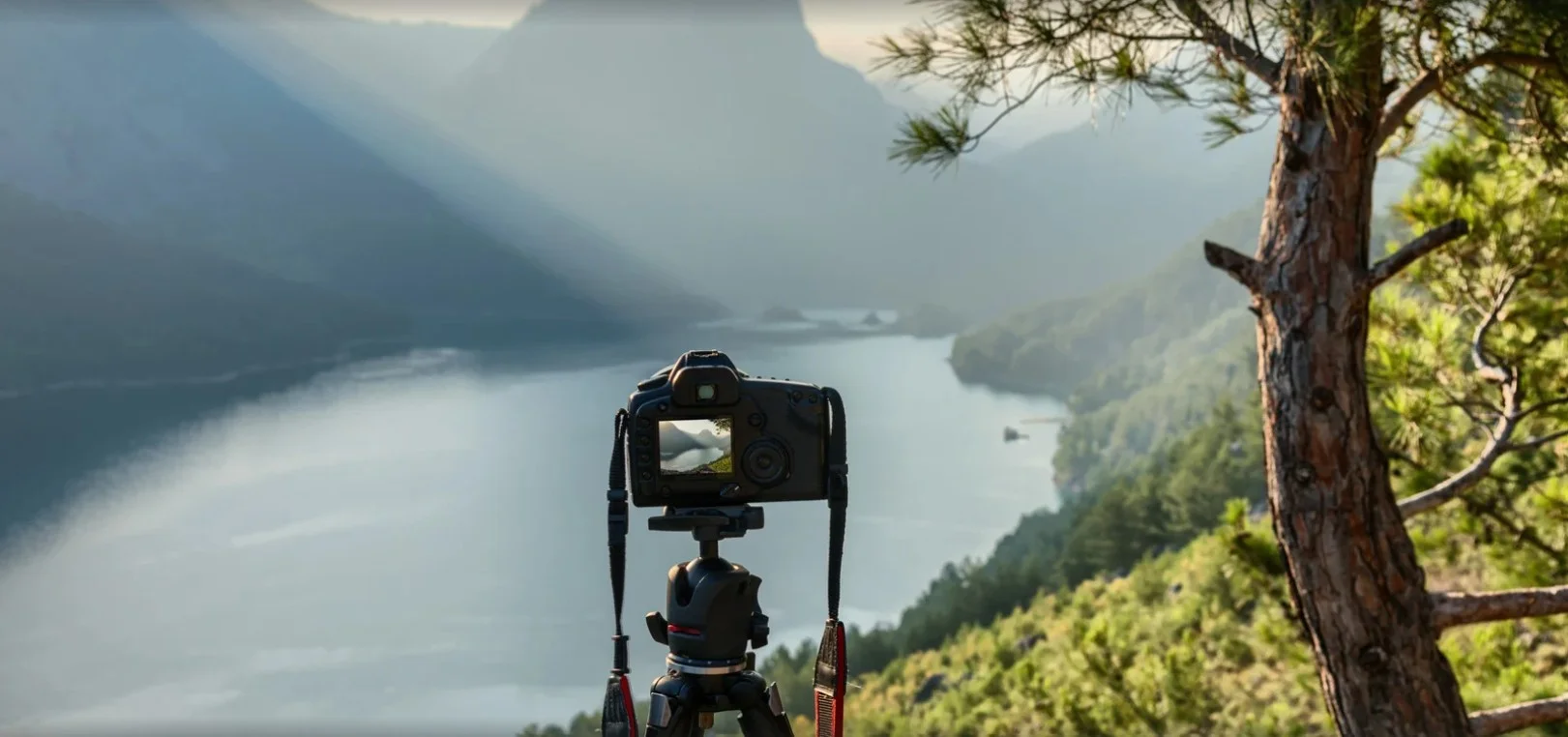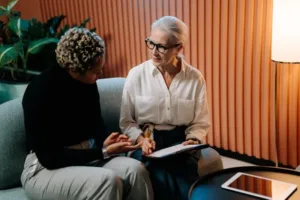Ever find yourself mindlessly scrolling through travel photos that just grab you? You know the ones. They don’t just show a place, they make you feel like you’re standing right there, breathing it all in.
There’s a world of difference between snapping a quick shot and crafting an image that actually tells a story. Most of us? We capture gorgeous scenery, but somehow miss creating that magical connection with anyone who sees our work later. The best travel photography tips are about turning everyday moments into stories that stick with people long after they’ve moved on to the next post.
Today’s world craves authenticity. Pretty pictures are everywhere, but stories that hit you right in the feels? Those are rare gems.
Essential Camera Settings for Storytelling Travel Photography
Look, your camera is basically your storytelling toolkit. And just like any craftsperson needs to know their tools inside and out, you’ve got to understand how these settings actually work together to create the mood you’re after.
Sure, the emotional stuff drives compelling travel photography. But if you can’t nail the technical side? You’ll miss those perfect moments that unfold right in front of you.
Golden Hour and Blue Hour Photography Techniques
These aren’t just Instagram buzzwords. Golden hour (that sweet spot right after sunrise or before sunset) literally transforms ordinary scenes into cinematic experiences. The light is soft, warm, and forgiving. Everything looks better.
Blue hour comes after golden hour ends. It’s moodier, more mysterious. Perfect for capturing Italy’s ancient architecture against those deep twilight skies. For photographers wanting to make the most of blue hour in Italy, having reliable internet becomes crucial; you’ll need to check weather forecasts and scout locations quickly. Many experienced photographers traveling there prioritize getting the best esim for italy to stay connected while chasing these fleeting lighting conditions.
Mastering Manual Mode for Narrative Control
Auto mode is convenient. But here’s why you should ditch it: auto mode doesn’t care about your story. It just wants everything “correctly” exposed according to some algorithm’s idea of perfection.
Manual mode? That’s where the magic happens. You decide how bright or moody your scene looks. You control whether that sunset in Rome feels warm and romantic or dramatic and intense.
When you’re shooting a series, say, documenting street life in a bustling market, manuals keep your exposure consistent. Your viewers won’t get distracted by jarring changes from frame to frame.
Using Aperture to Direct Visual Focus in Your Stories
Think of aperture as your attention director. Wide open (f/1.4 to f/2.8)? You’re telling viewers exactly where to look by blurring everything else into dreamy bokeh.
Stopped down to f/8 or f/11? Now you’re showing relationships how your subject fits into their environment. Both approaches tell different stories about the same scene.
Pre-Travel Photography Planning That Enhances Your Narrative
Random snapshots rarely create compelling narratives. But strategic planning? That’s what separates travel photographers who come home with memory cards full of “meh” from those whose work makes people stop scrolling.
Researching Cultural Stories and Local Traditions
Every destination has layers of stories waiting to be uncovered. Festivals that happen once a year. Daily rituals that reveal character. Markets that transform throughout the day.
Do your homework before you arrive. Not to create a rigid schedule, but to develop cultural sensitivity and spot opportunities others might miss. The worst thing you can do is show up somewhere with no context and accidentally create images that misrepresent the communities you’re documenting.
Creating Shot Lists Based on Destination Narratives
I’m not talking about stiff, inflexible checklists here. More like… story outlines. Think wide shots that establish where you are. Medium shots showing how people interact. Close-ups revealing character and texture.
Your shot list should be your compass when exploring Turkey’s UNESCO World Heritage Sites; it keeps you focused when the sheer number of incredible details feels overwhelming. But stay flexible. Some of the most memorable travel stories and photos emerge in the unplanned moments you stumble upon while wandering ancient ruins or vibrant cultural sites.
Essential Gear Selection for Different Travel Photography Ideas
Pack smart, not heavy. That 24-70mm lens? It handles most storytelling situations without turning you into a pack mule.
Consider your specific destination. Beach photography needs weather protection that mountain adventures don’t. Choose tools that enhance your storytelling without becoming burdens you’ll regret carrying.
Composition Techniques That Strengthen Visual Storytelling
Composition provides structure. But remember, the heart of great travel stories lies in authentic human moments that reveal cultural truth.
Leading Lines That Guide Viewers Through Your Story
Streets, rivers, architectural details, and natural formations all create visual pathways that pull viewers deeper into your narrative. But here’s the key: those lines need to point toward something meaningful, not just lead the eye off the edge of your frame. The most effective leading lines create depth while keeping focus on your main story element.
Framing Techniques for Cultural Context
Natural frames, doorways, windows, and architectural elements help viewers focus while providing environmental context. An ornate palace archway tells a completely different story than a weathered cottage window. Use frames that contribute to your narrative, not just pretty compositional tricks.
Rule of Thirds vs. Creative Composition for Emotional Impact
Sure, the rule of thirds works. It’s safe, reliable, and pleasing to the eye. But sometimes? Breaking it creates a more powerful emotional impact. Centered subjects can feel more intimate, more confrontational. Tight crops and unusual angles enhance emotional resonance when you use them purposefully, not randomly.
Capturing Authentic Human Connections in Travel Photography
Building real connections with locals transforms technical competence into emotionally powerful photography. This is where many travel photographers either shine or fall completely flat.
Building Rapport with Local Subjects
Genuine connections create authentic portraits that go way beyond surface-level documentation. Learn basic greetings in the local language. Approach photography as cultural exchange, not extraction.
Spend time before raising your camera. Share meals. Have conversations. Participate in daily activities. Trust builds naturally, and that translates into more relaxed, expressive portraits.
Candid vs. Posed Photography for Genuine Storytelling
Candid moments capture spontaneous emotions. Posed portraits let subjects present themselves thoughtfully. Both have their place in compelling storytelling.
A case study from a European tourism consortium revealed impressive results after adopting AI video generation for their Instagram campaign. By integrating this technology, the consortium achieved a 30% reduction in production costs and a 20% increase in engagement rates compared to their previous year’s efforts.
They directly attributed these gains to the enhanced visual quality and narrative consistency that AI-enabled content creation provided. The strongest stories combine both approaches seamlessly.
Ethical Considerations in Travel Portrait Photography
Always respect your subjects’ dignity and wishes. Some cultures have specific beliefs about being photographed. Honor them. Think about how your images might be used. Do your subjects understand this context? Ethical storytelling requires ongoing consent, not just that initial “yes.”
Advanced Storytelling in Photography Techniques
Ready to elevate your work from simple documentation to compelling visual literature? These advanced techniques make the difference.
Sequential Photography for Complete Narratives
Single images tell moments. Photo series tell complete stories. Document processes, track changes over time, and show different perspectives of the same subject.
Think cinematically: establish context, reveal details, provide resolution. This works brilliantly for cultural practices, natural phenomena, and daily routines.
Color Psychology in Travel Photography
Colors carry emotional weight. Warm tones suggest comfort and familiarity. Cool colors evoke distance, contemplation, and sometimes isolation.
Use this knowledge deliberately in your editing choices. Enhance naturally occurring color relationships rather than forcing artificial palettes that fight against your scene’s inherent mood.
Using Weather and Natural Elements as Story Characters
Weather isn’t a backdrop; it’s an active participant in your narrative. Fog creates mystery. Storms add drama. Clear skies suggest optimism or maybe even boredom.
Don’t wait for “perfect” conditions. Some of the most memorable stories unfold during unexpected moments.
Digital Workflow for Enhancing Story Elements
Your post-processing workflow can either enhance or completely undermine your narrative’s emotional impact. Approach it thoughtfully.
RAW Processing for Mood and Atmosphere
RAW files give you maximum flexibility for storytelling adjustments. But enhance existing mood, don’t manufacture fake atmospheres that weren’t there.
Maintain consistency across photo series while letting individual images shine. Your processing style should support your story, never distract from it.
Color Grading Techniques That Support Your Narrative
Subtle color adjustments dramatically impact emotional response. Try warm highlights with cool shadows for natural-looking depth.
Avoid heavy-handed color grading that screams “processed.” The most effective adjustments feel completely invisible while enhancing your story’s emotional core.
Improving Photography Skills Through Storytelling Practice
Growth happens through deliberate, targeted practice and engaging with communities of other visual storytellers.
Daily Photography Challenges for Skill Development
Regular practice builds storytelling instincts until they become second nature. Set weekly themes that push you beyond comfortable subjects and familiar compositions.
Document ordinary moments with extraordinary attention to narrative detail. Sometimes the most mundane situations contain the most relatable, powerful stories.
Analyzing Master Photographers’ Storytelling Techniques
Study accomplished photographers. Notice how they use light, composition, and moment selection to convey complex emotions through single images or series.
Don’t copy blindly. Understand the principles behind successful images, then adapt them to your unique vision and circumstances.
Final Thoughts on Visual Travel Storytelling
Mastering travel photography that tells better stories requires patience, practice, and genuine curiosity about the world around you. The most powerful images emerge when technical skills support authentic human connections and cultural understanding.
Remember: storytelling in photography isn’t about having expensive gear. It’s about developing your eye for meaningful moments and learning techniques that serve your narrative vision. Whether you’re exploring new travel photography ideas in distant lands or honing skills in your hometown, the principles stay consistent.
Observe carefully. Connect authentically. Trust your creative instincts. Your stories matter, and the world needs your unique perspective on the beautiful complexity of human experience.
Frequently Asked Questions About Travel Photography Storytelling
- How can I improve my travel photos without expensive equipment?
Focus on storytelling elements, lighting, composition, and human connections, rather than gear. Compelling narratives emerge from smartphones when photographers understand visual storytelling principles.
- What makes travel photography different from regular photography?
Travel photography captures cultural context and environmental storytelling that reveals place-specific narratives. It combines technical skills with cultural sensitivity and geographic awareness.
- How do I photograph people respectfully while traveling?
Build genuine connections first. Learn local customs. Always ask permission. Approach photography as cultural exchange rather than documentation, respecting subjects’ dignity and wishes.
Read Also: NVM Meaning and Best Responses: A Complete Guide
Recommended Products

100 First Texts That Always Get a Reply
Original price was: $ 15.$ 5Current price is: $ 5.Add to Cart
All Emoji Meanings Guide (3500+)
Original price was: $ 15.$ 7Current price is: $ 7.Add to Cart
100 Romantic Pick-Up Lines + 20 Bonus 18+ Lines | Modern Dating & Flirting Guide for Confidence, Charm, and Attraction
Original price was: $ 25.$ 10Current price is: $ 10.Add to Cart
100 Witty & Unexpected Responses to Compliments – Speak Awesomely’s Ultimate PDF Guide for Confident, Clever Conversations
Original price was: $ 15.$ 6Current price is: $ 6.Add to Cart




